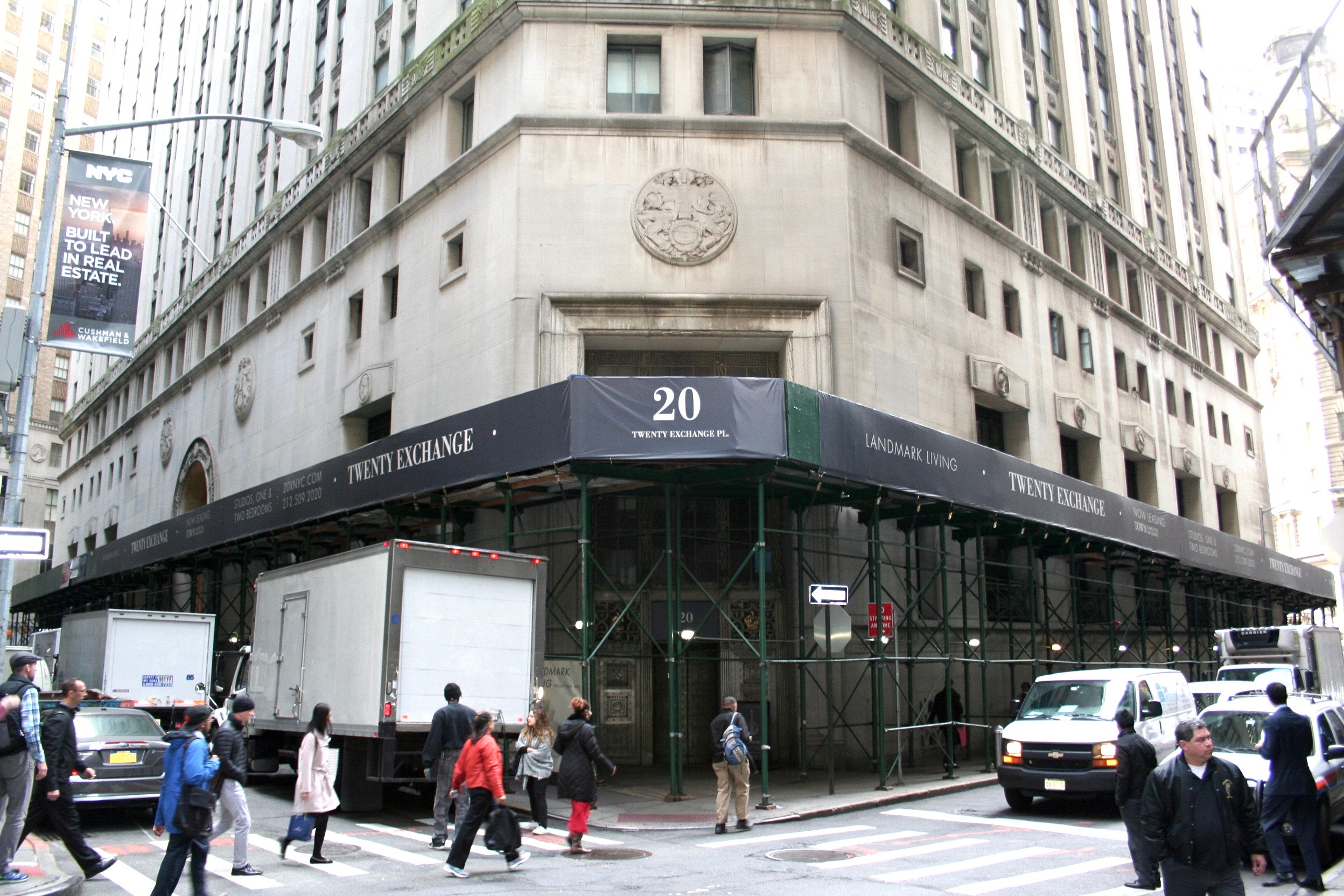
The narrow streets around 20 Exchange Pl. — a popular location for movie and TV shoots — make film crews a particular nuisance to some residents and shop owners.
BY YANNIC RACK |
A box office bomb or a critical success?
The movie stars and TV crews flooding the streets of the Financial District are a hit for the city but a flop for some local residents and shops.
“They burden the community and then the only one that benefits is the buildings — they’re making money hand over fist,” said Megan McHugh, who lives on Hanover Square, after bringing up the issue at a meeting of Community Board 1’s Financial District Committee earlier this year.
The Art Deco landmark right next door to her, 20 Exchange Place, is popular with TV shows such as “Gotham” and has appeared in movies including “Inside Man” and “Wall Street.”
“All of the residents and businesses affected by it receive nothing in return. With the trucks coming in, we can’t get deliveries, parking spaces are taken up,” McHugh said, accusing the Mayor’s Office of Film, Theatre and Broadcasting, which issues filming permits, of mindlessly rubber-stamping applications.
New York prides itself on being a “TV town” and film crews have become a regular sight in Lower Manhattan, one of the most scenic parts of the city.
According to the film office, there were 46 episodic television shows filming in the city in the 2014-15 season, as well as 242 movies last year alone. The office does not include details of individual productions on its website but said that community boards are notified about upcoming shoots.
The mayor recently released an independent study that found the filmed entertainment industry now contributes $8.7 billion to the city’s economy, an increase of more than $1.5 billion, or 21 percent, since 2011.
At the same time, full-time jobs connected to the industry have grown 10 percent, from 94,000 to 104,000, over the last four years.
“I think filming of movies and TV Downtown are incredibly important for our community, for jobs and for the image of the Financial District,” said Luis Vazquez, who lives on John St. and is also a public member of CB1.
“The fact is it’s one of the city’s biggest industries,” he said.
How much of that trickles down to local businesses is not always clear.

Minas Polychronakis complains that customers can’t reach his FiDi shoe repair shop whenever film sets clog the area.
“For the city it brings money, but not for us,” said Minas Polychronakis, who runs a shoe repair shop on Wall St.
“They park all over, they block the neighborhood. They dictate the streets down here,” he said, adding that in over a decade in the area he has come to expect being regularly cut off from his customers by film shoots.
But not all of his neighbors agree. George Kulamgiev, who owns George’s Hair Styling on Beaver St., gave two thumbs up to the film crews.
“I like it because they all come here — electricians, set people, all of them,” he said, estimating that he has served over 1,000 crew members in his 14 years in the area. “Every month we get some filming, and each time at least a dozen come, to get a haircut or a beard trim.”
Colleen Mitchell, co-owner of the Cucina Bene Pizzeria on Exchange Pl., said she does lose business from residents when streets are blocked off, but she makes the money back from catering to the movie crews. She said that in her experience, the production crews have been good neighbors.
“They clean up after themselves, and we all need to make money somehow,” she said, adding that one production last summer even reimbursed the pizzeria for a day of lost business.
“Big-budget productions have been very good. They present before [the community board] and they buy from local vendors,” said Vazquez, who suggested that better cooperation might resolve residents’ concerns.
“I have no issue with them being down here at all, and would never advocate any limits on them,” he said. “That said, they need to be cognizant that this is a residential neighborhood.”


































